Bathroom design with painted walls
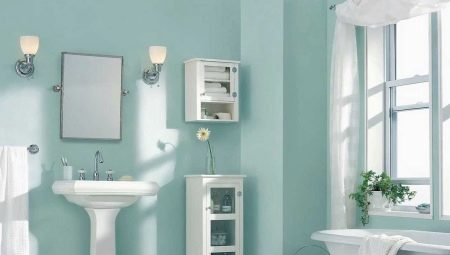
Bathroom interior design requires a particularly careful approach to the selection of decorative coatings. Plastic panels do not always live up to expectations. Decorative tiles are not relevant for all design styles. Natural minerals and rocks in ordinary small-sized housing look too pompous and heavy. Almost all the best ideas today are based on the use of modern paint, which forms a breathable coating with a smooth or rough texture.
What can be the design of a bathroom with painted walls? Interior options are striking in variety and give scope for the use of creative ideas and solutions. Bathroom in typical English style or romantically decorated room in the spirit of French Provence, minimalism, hi-tech, vintage ... Types of paint for each of these design solutions should be selected individually, taking into account all the features of the room, its area, color scheme.

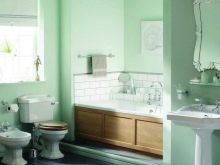
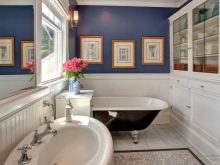
Advantages and disadvantages
What are the benefits of using painted walls in the bathroom? Among the obvious advantages are the following.
- Modern design solution... Painted walls, thanks to the possibilities of tinting, allow you to realize almost any idea in the design of a room. You can paint the walls using stencils, create a clear graphic ornament, or make an effective solid color coating.
- Profitability. The cost of paint, even in the most expensive version, is incomparable with those that await a homeowner when purchasing tiles or other decor options.But this is only true for finishing already flat walls. Alignment will require additional financial investments.
- Ease of combination... The paint can be combined with tiles, PVC panels, mosaics, natural stone, porcelain stoneware, supplemented with various decorative panels. When using staining in combination with special wallpapers, there will be even more design options.
- Variety of textures... You can get a matte finish that almost does not reflect light, or an impeccable glossy shine, to recreate a silk or satin texture.
- Increased moisture resistance. The material is not afraid of direct contact with moisture, with the right choice of paint - based on acrylic or latex - the coating can be washed and cleaned with mild agents without the risk of damaging it.
There are also disadvantages. It is necessary to prepare walls for painting very carefully - any irregularities, seams, joints will be visible here... With poor ventilation, wall decoration can suffer from fungus or mold, especially for non-moisture resistant compounds. Besides, it is not recommended to clean painted surfaces with harsh abrasive substances.
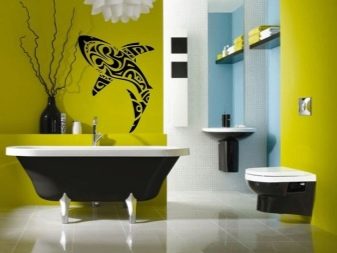


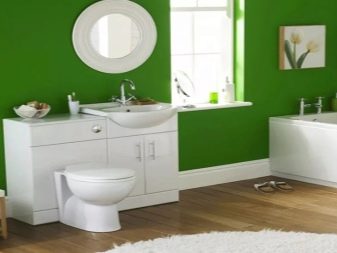
Overview of paint types
The variety of paints offered for wall decoration in rooms with high humidity amazes even experienced craftsmen. All compositions can be divided into 2 large groups: by the type of base and by the texture of the material. They differ in different levels of moisture resistance and decorative properties of the coating.
By texture, paints are divided into these types.
- Glossy. A widespread option often used in small bathrooms. The glossy coating reflects light, allows you to visually expand the room, make it more spacious. At the same time, such paint emphasizes even the slightest flaws, height differences on the walls.
It is necessary to level the surfaces for coating especially carefully.
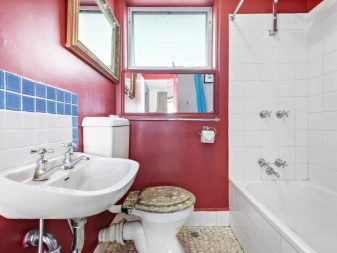
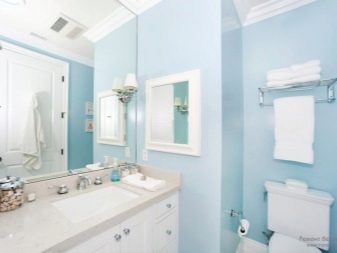
- Matte. The most popular option in modern design. Matte coatings practically do not reflect light, giving the interior a respectable, noble look. The painted wall acquires a texture similar to the fabric one, but in terms of moisture resistance it is much inferior to other options. Matte paints require good lighting, harmoniously combined with tiles and other textured materials.
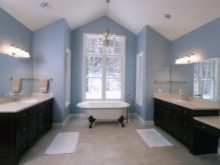
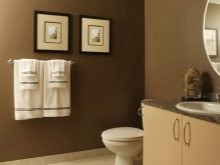
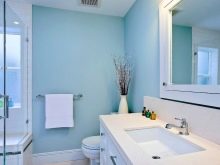
- Textured. These are specialized paints that allow you to simulate various coatings or create three-dimensional patterns. The originality of such a finish does not require additional accents, but it will be noticeable only in a well-lit room. It is recommended to use textured paints in spacious bathrooms with French windows, in country houses or in studio apartments.
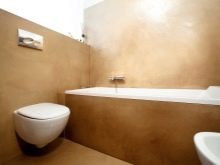

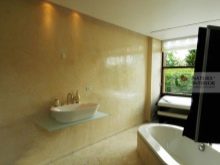
The type of paint and varnish base also matters. It affects such characteristics as moisture resistance, texture of the composition, its uniformity, drying rate and the presence of a sharp chemical odor.
Most modern paints have a water-soluble base and do not require the use of flammable components. The presence of antifungal additives is a great advantage and makes it possible not to fear the appearance of black plaque on the walls.



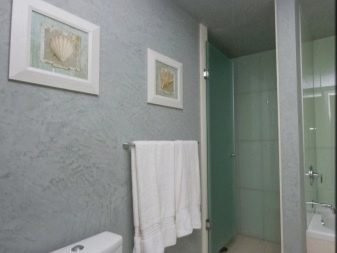
By the type of base, the following types of paints are distinguished.
- Water-based. This type of paint is a breathable, quick-drying material, most often used as a decoration for ceilings and walls that do not come into direct contact with drops or splashes of water. Among the advantages of water-based dyes are hygroscopicity, the absence of a pungent odor, and ease of application. But upon contact with water, the wall decoration can be seriously damaged, covered with drips.
- Acrylic and latex. The most modern formulations that are resistant to damage and moisture. They are odorless and can withstand dry and wet cleaning. They form an aesthetic coating on the surface that can withstand temperature extremes, changes in humidity, and contact with steam.Acrylic and latex paints have the widest range of colors and shades, they can be tinted to almost any tone.
- Chlorine rubber. Paints on this basis are quite expensive, produced mainly in European countries. They are elastic, resistant to mechanical damage, and were originally developed for finishing swimming pools.
- Butter... Long-drying paints requiring the use of solvents with a strong chemical odor. Work with such compounds in the bathroom can only be carried out in a respirator. The composition of the oil paint determines the density of its texture; it is difficult to make such a coating perfectly even. Of the advantages, mechanical strength and affordable cost can be noted.
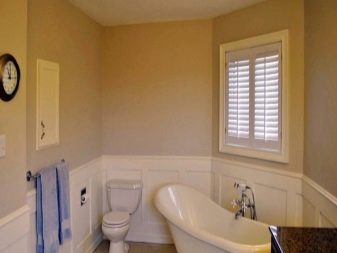
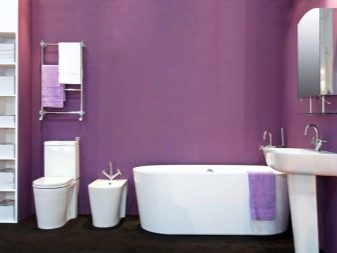

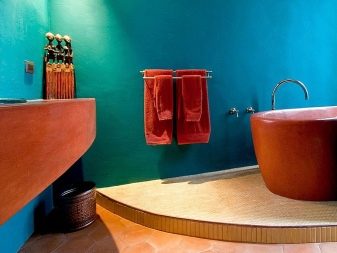
Designers most often recommend using matte water-based paints for ceiling finishes. This allows you to visually make the space more respectable, does not require significant physical effort.
Today it is customary to apply paints on an acrylic or latex base, textured, matte or glossy, depending on the choice of decorative solution.
Best colors
Bathroom design with painted walls requires careful selection of colors. It can be a background application of bright colors - blue, light blue, green, turquoise... This finish is suitable for small and spacious rooms. Only one wall or several adjoining surfaces can be accentuated. Bright colors can be combined with neutral white or light gray.



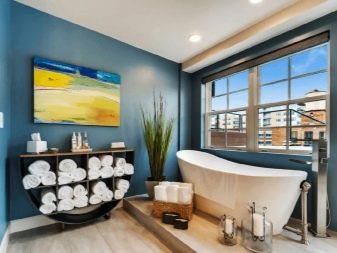
Snow-colored walls are not the best choice for a bathroom; a milky or creamy tone looks more noble here. Such an interior can be "diluted" with bright, contrasting accessories. Red, black, wine, brown should be used with caution, they can be used to make a graphic pattern or highlight one wall.
If you want brightness, it is better to choose lavender, coral, lemon yellow or mango shades, orange, fuchsia. Milk and beige tones are well suited for a combined bathroom, look great in a spacious room.
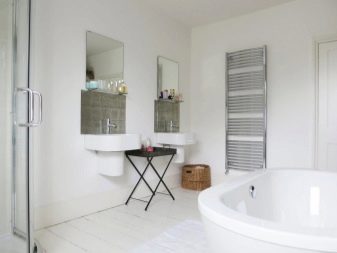


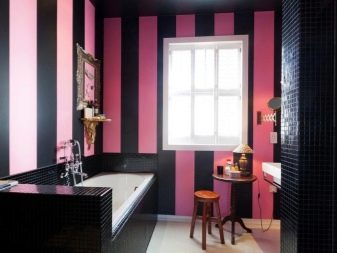
Painting methods
Among the methods of painting the walls in the bathroom, one can single out popular design solutions that allow you to get quite effective results. In watercolor technique several shades of paint are used, a container with water and a household foam sponge for application. A tool soaked in paint is dipped in water and then touches the wall with light, short strokes.
Zigzag and chevron print is also very popular and easy to apply. In this case, the walls are first covered with background paint - white, beige, black, gray. Contrasting lines are applied on top - masking tape is used to create them as a stencil. A narrow roller or brush of the required width moves along it.
Fashionable today prints in the style of pop art, inscriptions, silhouettes are also easy to create yourself. It is enough to use prepared paper stencils and a paint sponge.
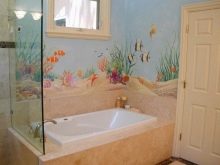
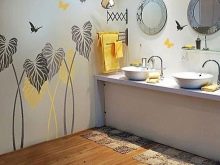
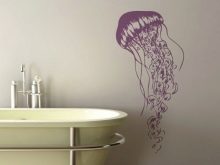
Wall design options in different styles
Depending on the stylistic solution, the choice of color and texture of the coating changes.
- Classic style. The walls are painted in a calm, pastel color scheme, the "wet" areas are finished with matching tiles.
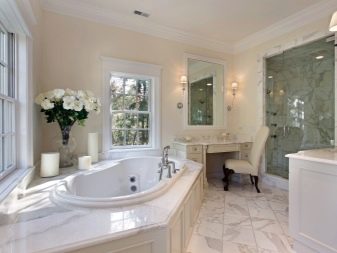
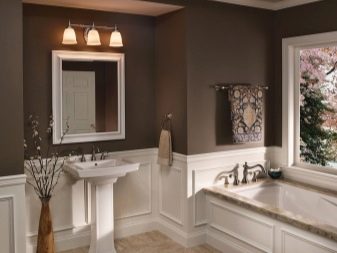
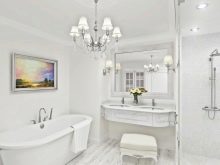

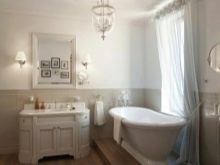
- High tech... Here, wall painting can be created using monochrome colors in black-white-gray tones, or performed in other colors of the cold spectrum. Glossy textures are used, complemented by glass, mirror details.

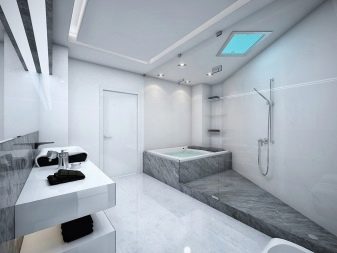
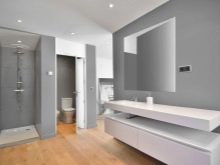

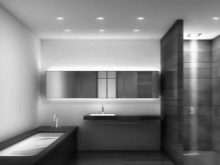
- Provence... Matte textured paint, patinated, aged, worn, looks good in this style. The color scheme is light, light, in pistachio, pink, blue, lemon tones. The use of floral ornaments made using stencils is also permissible.
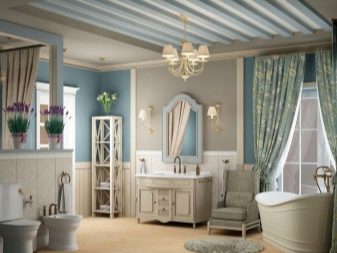
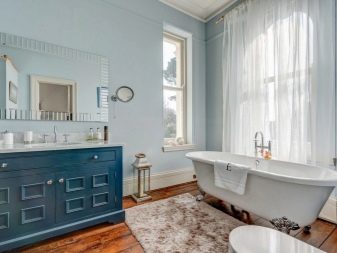
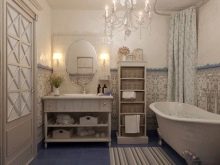
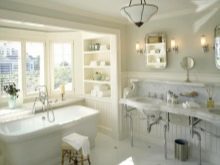
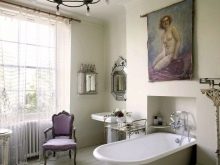
- Pop Art... A bright, defiant, catchy style allows you to create unthinkable combinations of rich and calm tones, use comic-style inserts, fantasy art, frescoes. Such walls look interesting in a laconic matte design, with original accessories and architectural elements - ledges, arches, niches.
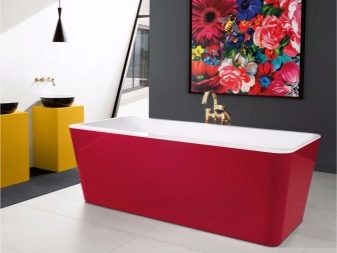



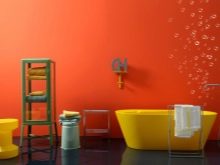
- Modern. Monochromatic wall painting in deep, noble tones with a matte texture is a characteristic feature of this style. Modern is suitable for spacious bathrooms, allowing the use of wine, coral, blue, malachite or grassy green tones.
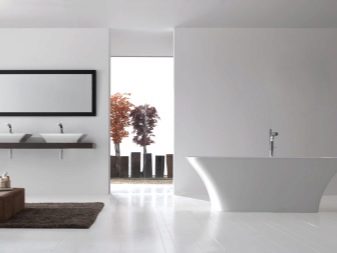

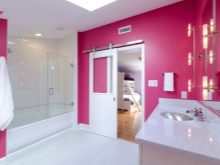

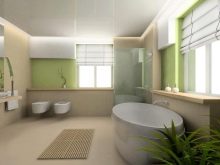
Beautiful examples of interior design
We have collected some ideas for your inspiration.
Painting the walls in a modern manner. The vertical lavender white stripe complements the rich, deep color of the bath bowl.

Matt paint in a light pastel color harmonizes perfectly with classic bathroom furnishings. Light purple shade makes the space light, airy.
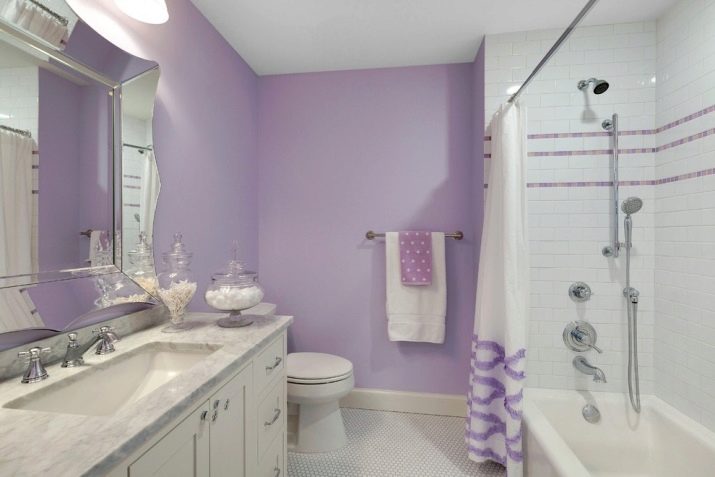
Creative nautical bathroom wall decoration harmonizes well with watercolor painting technique, smooths out minor roughness of the repair.

Next, watch a video with a story about the pros and cons of painted walls in the bathroom.








